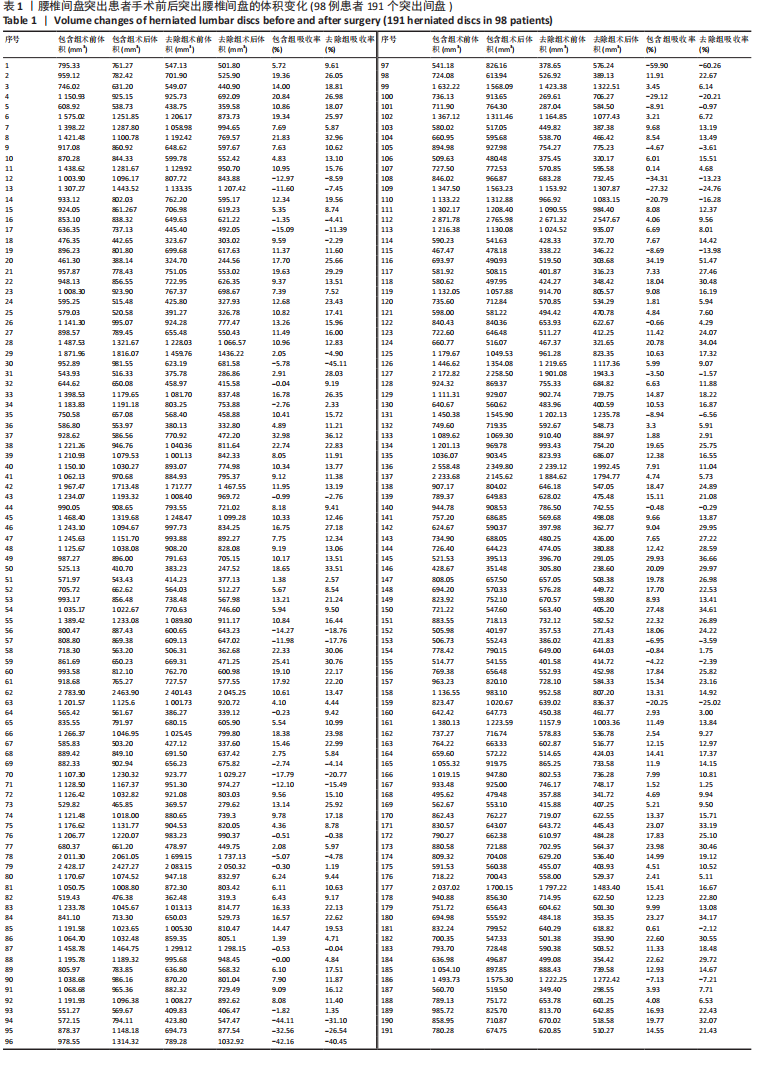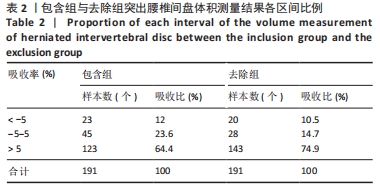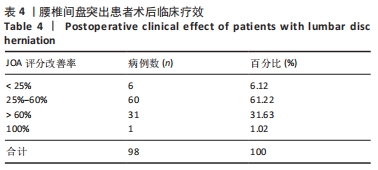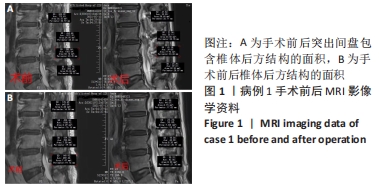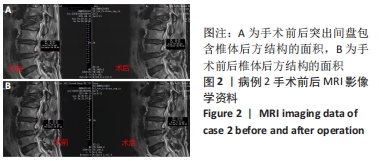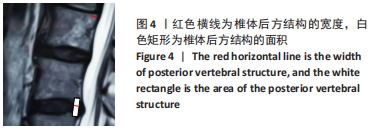中国组织工程研究 ›› 2023, Vol. 27 ›› Issue (18): 2897-2902.doi: 10.12307/2023.348
• 骨与关节图像与影像 bone and joint imaging • 上一篇 下一篇
椎体后方结构及对突出椎间盘体积测量的影响
牛策号,张春霖,严 旭,付 苏,冯 阳,朱安迪
- 郑州大学第一附属医院骨科,河南省郑州市 450000
Posterior vertebral structure and its influence on measurement of disc herniation volume
Niu Cehao, Zhang Chunlin, Yan Xu, Fu Su, Feng Yang, Zhu Andi
- Department of Orthopedics, First Affiliated Hospital of Zhengzhou University, Zhengzhou 450000, Henan Province, China
摘要:
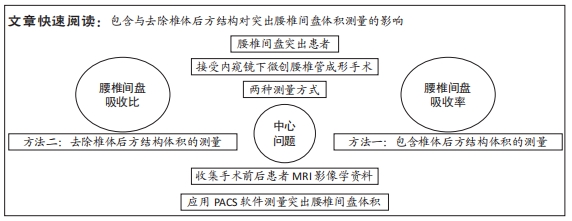
文题释义:
椎体后方结构:是椎管内椎体和前侧硬膜之间的结构,前边界为椎体后缘和椎间盘后缘,后边界为脊髓/脑脊液,外侧为椎间孔和椎弓根,上端和底端分别为枕骨大孔和骶骨裂孔。其中的组织主要包括:后纵韧带、疏松蜂窝状结缔组织、椎管内静脉丛、脂肪组织、硬膜外韧带、淋巴管等,功能集中于为脊柱提供力学支持,且具有血供、营养、连接和缓冲保护作用。
三维体积测量法:是利用PACS软件在MRI矢状位T2图像上,以上位椎体后下缘及下位椎体后上缘连线为内边界,突出物边缘作为外边界,得到当前层面突出腰椎间盘的面积,逐一测量每个层面的面积,利用以下公式计算突出腰椎间盘体积:突出腰椎间盘体积=(层间距+层厚)×∑每一层突出腰椎间盘面积。
背景:突出椎间盘体积测量是定量评估椎间盘突出程度的重要数据,以往在对内窥镜下微创颈椎管成形术后突出颈椎间盘体积的观察中发现,定量测量不能证实突出的颈椎间盘被完全吸收,可能与椎体后方一些不能吸收回纳的组织被包容在突出的椎间盘组织中一并被测量有关。
目的:对比分析包含与去除椎体后方结构对突出腰椎间盘体积测量的影响,并初步观察内镜下微创腰椎管成形术后突出椎间盘体积的早期变化。
方法:选择郑州大学第一附属医院收治的腰椎间盘突出患者98例(涉及191个椎间盘),收集患者内镜下微创腰椎管成形术前与术后1周的腰椎MRI影像资料,均应用PACS软件测量突出椎间盘体积,分2种测量方法:一组包含椎体后方结构,另一组去除椎体后方结构。比较两种测量方式下,手术前后突出腰椎间盘的缩小率、缩小比、不变比、增大比、增大率,以及术后1周的2种测量方法下的突出腰椎间盘的吸收比、吸收率。
结果与结论:①包含组术后突出腰椎间盘体积缩小的有123个,缩小比64.4%,最大缩小率34.17%;体积不变的有45个,不变比23.6%;体积增大的有23个,增大比12%,最大增大率59.9%。去除组术后突出腰椎间盘体积缩小的有143个,缩小比74.9%,最大缩小率51.47%;体积不变的有28个,不变比14.7%;体积增大的有20个,增大比10.5%,最大增大率60.26%。②包含组术后突出腰椎间盘的吸收比、吸收率均低于去除组(P < 0.01)。③结果显示,去除椎体后方结构进行突出腰椎间盘体积测量的方法更为接近实际状态,精准度更高;内镜下微创腰椎管成形术后早期即能广泛“诱导”突出的腰椎间盘发生自然吸收。
https://orcid.org/0000-0002-3848-2266 (牛策号);https://orcid.org/0000-001-9565-4485 (张春霖)
中国组织工程研究杂志出版内容重点:人工关节;骨植入物;脊柱;骨折;内固定;数字化骨科;组织工程
中图分类号:
